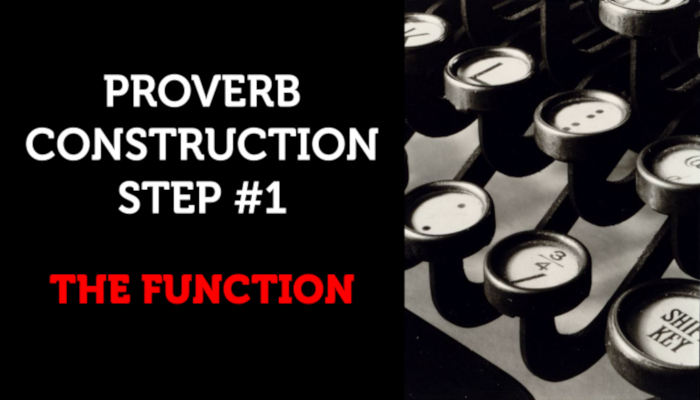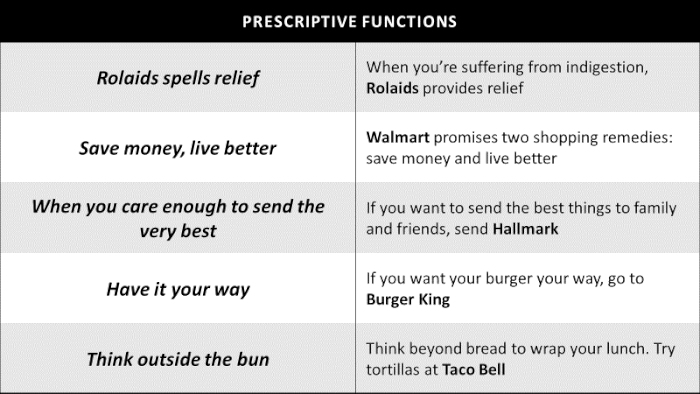
Last post, I described the StoryHow™ PSP method of building a talk. The technique has speakers open with a proverb, offer evidence via a story, and finally close with that proverb. While the same proverb is used to bookend the story, its purpose is different. The first instance acts as a premise and the second as a conclusion. In this post, I describe the first of a three part process for creating your own proverbs.
Whether you’re sharing an opinion, giving advice, or just leaving your audience with something to chew on, you first must make a choice. What are you trying to accomplish? What do you need your message to do? In the language of proverbs, you need to determine your function.
Proverb functions come in three forms: definitions, predictions, or prescriptions:
- Definitions describe one thing in terms of another. They typically contain words like is, are and like
- Predictions illustrate a cause and effect relationship to show how one event leads to another
- Prescriptions offer ways to either solve or prevent a problem
I’ve found that the best business taglines are proverbish, so let’s use a few to learn about the differences.
So, now it’s your turn. What’s your favorite business slogan? Can you determine it uses definition, prediction, or prescription?
If you want to learn more about proverbs, grab a copy of The Proverb Effect on Amazon.com.
Sources:
-
- https://superdream.com/news-blog/best-advertising-slogans
- http://examples.yourdictionary.com/catchy-slogan-examples.html
Photo Credit: Clarence H. White School Of Photography, Steiner, Ralph, photographer. Typewriter Keys. , 1921. , Printed 1945. Photograph. https://www.loc.gov/item/2004666344/



